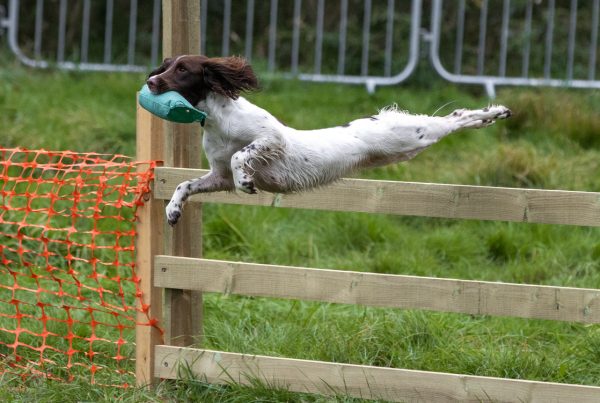By Wendy Beasley

Although I hear the words grandmother and eggs ringing in my ears, I’m going to risk talking about a subject which may be of interest. As a breeder my ultimate aim is perfection, and while I recognise that this is almost impossible to achieve, it doesn’t stop me trying. To this end I DNA test my breeding stock for everything it’s possible to test for, and the reward is that it actually tells you not only your dog’s status, but also whether or not it is able to pass on a genetic fault. The peace of mind of knowing your dog cannot produce hereditary faults is well worth the money spent finding out, and as long as these and any other tests are available, I am happy to have them done.
Unfortunately things are not so simple with structural faults, many people do not hip x-ray their breeding dogs, but those that do, and breed only from low scoring parents, are still not guaranteed fault free offspring. I bred a litter from a bitch with really low hip scores to a working sheep dog, that although not x-rayed was 8 years old with countless working offspring, and both he and several of his sons were full time working sheepdogs and successful trials dogs, so I was not worried about his soundness. Nevertheless, of the five pups produced, three have been x-rayed and found to have poor hips. I immediately thought the problem must lie with the sire, as my bitch had good low score hips, but when I did some research I found that it’s not as clear cut as I thought.
I discovered that when puppies are born their hip joints are still mobile to allow for flexibility on their journey down the birth canal, so the ball and socket joint is not fixed but movable and only connected by ligaments which, at a later date, tighten and pull the ball into the socket, giving the pup its permanent joint. This happens over a period of time, during which the potential for damage to the ligaments is quite high. Obviously if these ligaments get stretched, or even broken during the pups early life, the hip joint will not seat properly and what is a well formed ball and socket joint will end up showing up as hip dysplasia. Damage to these ligaments can be caused by jumping too early or too much exercise as well as injury in play or rough handling, and what may have been good hips will end up showing up as dysplastic.
I suspect this is what happened to the three affected pups in my litter, but whatever the reason for their bad hips the blame is put fairly and squarely on the breeding, and without any hip x ray for the sire I couldn’t argue the case. We later discovered that the sire had in fact been x-rayed as a youngster for an unrelated injury to his back and was seen to have very good hips, but none of this is valid without the paper proof. Although it would seem that parents with good hips do not necessarily guarantee offspring with good hips, and bad hips do not necessarily adversely affect the dog’s performance, we are still duty bound to do the required x rays even though the results seem to be of very little value. I belong to the school of thought that says that a dog that is able to do its job for many years without lameness or discomfort is probably sound, but this is no longer good enough for the buying public and so I adhere to the required tests and run the risk of a result which on paper says my dog is unsound, even though my eyes tell me differently.
So although it may all seem a waste of time, money and paper, perhaps some of you with breeding dogs should think seriously about having them x rayed to satisfy those from the sporting worlds of agility and working trials who won’t buy from untested parents or use an untested stud dog. An outlay of a few pounds is probably worth it if opens up a new stream of stud and puppy enquiries, and even if you don’t totally buy into the value of the results those wanting to buy or use your dogs certainly do, so it will be worth it.
Of course there is always the risk of the result not being as good as you would want, but if the dog continues to work and stay sound you are really no worse off. Personally I’m not convinced that we have made any headway with the hip problem. Unlike PRA and CEA which we have managed to control by testing, hip x-raying does not seem to have had any bearing on the prevalence of hip dysplasia, but while it’s available we might as well use it and prove that we have done everything in our power to produce healthy stock.
So all in all I think the answer is yes, we should x ray on the basis that it does no harm and may over time do some good, and increase our understanding of this structural abnormality. However, I cannot overstress the importance of choosing the right practitioner to carry out the procedure, as there are countless horror stories of bad reactions to anaesthetics, as well as poor positioning resulting in bad scores that cannot be redone or altered. Taking heed of recommendations from those that have been pleased as well as warnings from those that have not is a wise maxim to follow, but don’t let it put you off the procedure itself. One last point, from a totally selfish viewpoint, if some of you with super stud dogs would just have them hip scored it would make for a world of great dogs available for me to use!


